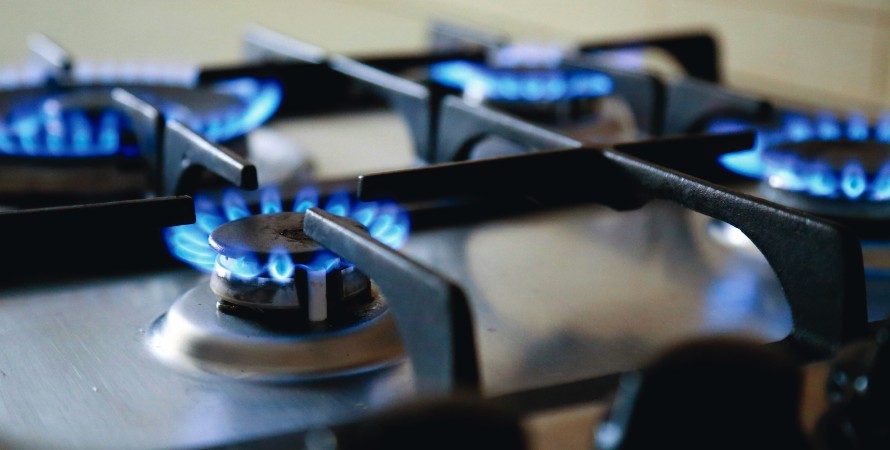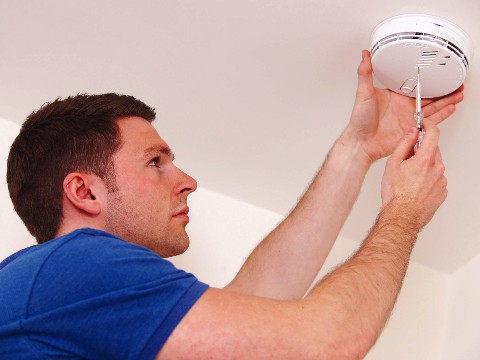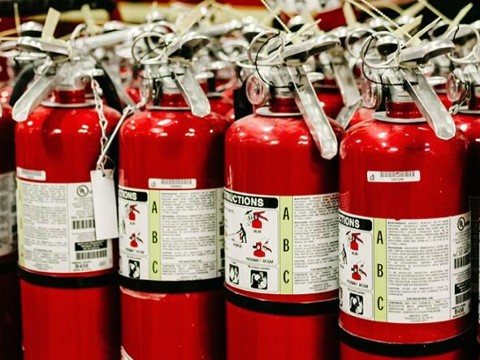National Grid Encourages Customers to Stay Safe While Turning Back the Clocks at the End of Daylight Saving Time
Categories:

National Grid customers across the company’s service area will set their clocks, watches, and devices back one hour this weekend to coincide with the end of daylight saving time, which occurs at 2 a.m., Sunday, Nov. 6. The occasion is also an opportunity to change batteries in carbon monoxide detectors and smoke alarms, and review some simple home safety tips.
Carbon Monoxide Safety
Carbon monoxide is an invisible, odorless gas that could be deadly if undetected. It’s produced when fuels such as natural gas, propane, heating oil, wood and wood pellets, kerosene, gasoline and coal don’t burn off completely. Potential sources of carbon monoxide in the home include forced-air furnaces, kerosene-fueled space heaters, natural gas ranges, wood stoves, water heaters, fireplaces, and motor vehicles.

Carbon monoxide poisoning symptoms include headaches, weakness, confusion, blurred vision, shortness of breath or chest tightness, dizziness, nausea or vomiting, and sleepiness or loss of consciousness. Prolonged exposure and the amount of carbon monoxide in the air may intensify the symptoms felt by an individual. Customers suspecting its presence in their home should:
- Immediately exit the premises.
- Call 911 and report a carbon monoxide emergency to first responders.
- Contact National Grid’s gas emergency line at 1-800-892-2345 for Upstate New York, 718-643-4050 for Brooklyn, Queens and Staten Island, 1-800-490-0045 or 911 for Rockaway Peninsula/Long Island, or 1-800-233-5325 for Massachusetts. National Grid responds immediately to all suspected carbon monoxide emergencies within its service area, even if the customer purchases natural gas from an alternate supplier.
- Do not reenter the home until first responders and/or National Grid find the source and clear the scene.

A carbon monoxide detector should be installed on every floor of a home. National Grid recommends the installation of Underwriters Laboratory approved home carbon monoxide detectors, available at home improvement and discount stores. Batteries should be changed annually to ensure proper function and the end of daylight saving time is a good reminder to check these devices. National Grid also offers the additional safety tips to help identify and prevent carbon monoxide poisoning:
- Annual maintenance of home heating sources is an important step to preventing carbon monoxide illnesses. Licensed contractors check heating sources to ensure they are burning fuel safely and efficiently while venting properly.
- Check chimneys or flues for debris, bird nests or other blockages.
- Be sure space heaters and wood stoves are in good working order, adequately ventilated, and used according to manufacturer’s instructions.
- Operate gas ovens and/or ranges safely.
- Never use an oven for heating purposes.
- Be mindful of children and how close they are to the oven when in use.
- Inspect the oven for pungent odors or soot on its surface, as this may indicate improper combustion and carbon monoxide generation.
- Coal or charcoal should never be burned in an enclosed space and should always be ventilated outdoors.
- Backup generators should always be operated outdoors. Place the generator on a level, fireproof surface at least six feet from the home and run cords indoors when operating. Open windows and doors do not provide sufficient ventilation.
- Don’t warm up an automobile while it’s parked in a garage, regardless of whether the door is open. Carbon monoxide produced by a motor vehicle in a confined space can build to lethal levels and easily spread to the inside of the home.
- Click here for National Grid’s Carbon Monoxide Safety fact sheet. For more information on carbon monoxide prevention visit the U.S. Consumer Product Safety Division.

Fire Safety
- Smoke alarms should be installed inside each room where someone sleeps, as well as outside of these areas. There should be at least one smoke detector on each floor of the home, including the basement and attic.
- Mount smoke alarms to the ceiling or wall. Wall-mounted alarms should be no more than 12 inches from the ceiling.
- In homes with pitched ceilings, mount the smoke alarm within three feet of the peak, but at least four inches below the peak.
- To prevent false alarms, install smoke alarms at least 10 feet from any cooking appliance (e.g. ranges, stovetops, ovens, air fryers, toasters and toaster ovens).
- Smoke alarms installed in the basement should be ceiling-mounted at the bottom of the stairs.
- Avoid installing smoke alarms near windows, doors or ducts, where drafts may disrupt operation.
- Never paint, stain or cover smoke alarms.
- Maintain smoke alarms as directed by the manufacturer.
- Test smoke alarms at least monthly by pressing the test button.
- Smoke alarms with 10-year non-replaceable batteries will make a chirping noise when the battery is low. The entire device should be replaced.
- Replaceable batteries in smoke alarms should be changed every six months, such as at the beginning and end of daylight saving time.
- Inspect your home’s fire extinguisher.
- Make sure at least one extinguisher is available on each floor of the home, including one in the kitchen.
- Ensure extinguishers are easily accessible and not blocked by coats, containers, or other items.
- Check the tamper seal and pull pin. Replace the extinguisher if either have been broken or compromised.
- Look for signs of physical damage, such as rust, corrosion, or dents. If any are found, replace the extinguisher.
- Purchase the extinguisher compatible with the environment where it may be used. For instance, Class K extinguishers are appropriate grease fires and those near combustible gas, whereas Class C extinguishers are for electrical fires.

Detecting Natural Gas Odors
If a gas leak is suspected, assume there’s danger. Immediately warn others and evacuate the home, taking any pets.
- Do not use the telephone or any electric devices such as light switches, garage door openers, doorbells, radios, televisions, or mobile devices. A spark from any of these sources could ignite the gas, causing a fire or explosion
- From a safe location, call 911 and National Grid’s gas emergency line at 1-800-892-2345 for Upstate New York, 718-643-4050 for Brooklyn, Queens and Staten Island, 1-800-490-0045 or 911 for Rockaway Peninsula/Long Island, or 1-800-233-5325 for Massachusetts.
- Do not reenter the home or building until National Grid personnel clear the scene.
Remember: Smell gas. Act fast. For more safety tips, visit National Grid’s website at https://www.nationalgridus.com/safety.
About National Grid
Media Contacts
Related News
